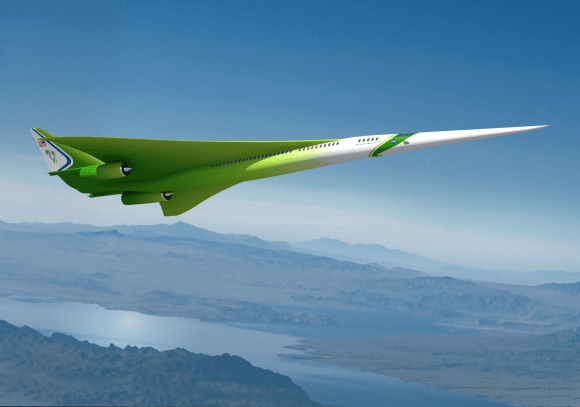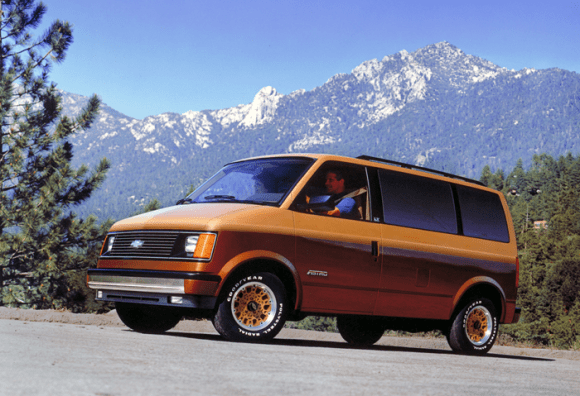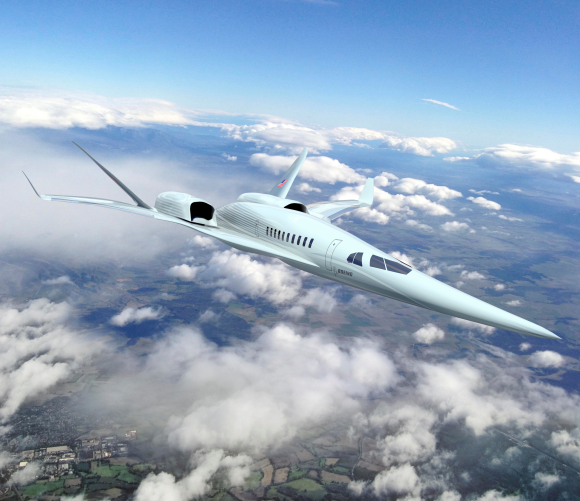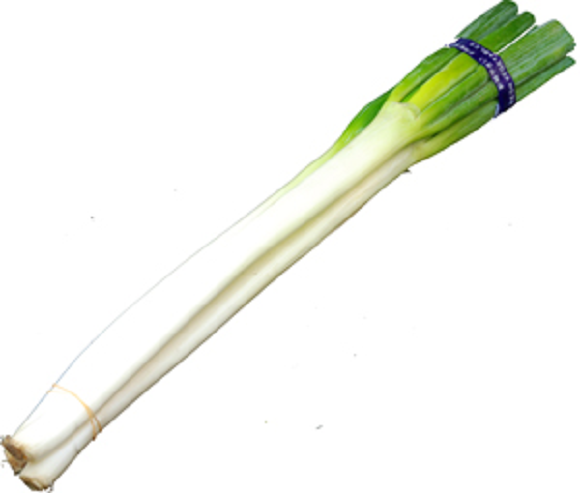
I always feel a little sad whenever I stop and think that NASA’s Space Shuttles are no longer in service. For decades, they served as symbols not only for the pioneering spirit of their mission crews, but for NASA itself, an organization that serves as a gathering point for some of the brightest and boldest scientific minds on the planet.
NASA hasn’t completely gotten out of the high-tech transportation field, though, as it’s moving ahead with a project to develop a supersonic passenger jet. As impressive as its specs are, though, it looks like something quite a bit more down to earth: a root vegetable.
The final Shuttle flight was in 2011, and since then NASA’s been without an iconic vehicle. Even our research attempts to find out what kind of car NASA Administrator Charles Bolden drives to work every day have proved futile.
▼ Until we hear otherwise, we’re just going to assume it’s an ’87 Astro Van.
In late 2010, though, NASA began looking into the possibility of filling the supersonic air travel hole that was created when the Concord was retired in 2003. We’re several years away from being able to book tickets on the high-speed craft, though, as NASA is still looking at differing design proposals from research partners Boeing and Lockheed Martin.
One of the biggest hurdles the project faces is how to suppress the noise that would be made once the aircraft breaks the sound barrier. Differences in wing design and engine placement can affect both the exact pitch and intensity of the sonic boom. Boeing, for example, is leaning towards mounting the engines above the wings, for an effect somewhat like a 21st-century F-4 Phantom.
The advantage to this is that when the sonic boom occurs, the shock waves would travel upwards, reducing the noise heard below.
Lockheed Martin, on the other hand, isn’t convinced this packaging is the most efficient in terms of engine performance. While its version of the supersonic jet shares the long fuselage and pointed nose of the Boeing mockup, Lockheed Martin’s design places the engines underneath a pair of large delta wings.
Lockheed Martin also seems to be going for style points, giving its version some snazzy green livery, as opposed to the monochrome offering from Boeing. However, to some Japanese Internet commentators, the paint scheme doesn’t say “airline of tomorrow” so much as it says “green grocer.”
In other words, they think it looks like a green onion, or as the Japanese say, negi.
“It’s a negi.”
“Totally a negi.“
“All I’m seeing is a negi.”
“Here it comes, the negi jet!”
But hey, this isn’t all bad news. Plenty of people in Japan love negi, as chopped green onion is commonly added to miso soup, ramen, and okonomiyaki. Negi is also strongly associated with virtual idol Hatsune Miku, so if and when Lockheed Martin’s design goes into commercial service in Japan, airlines have a cross-promotional marketing campaign all ready to go.
▼ If ANA found success with its Pokémon jet, there’s no reason they can’t do it again by slapping a Miku decal on the side of a plane.
Sources: Ennori, Jin, NASA
Top image: NASA/Lockheed Martin
Insert images: Hemmings, NASA/Boeing, Wikiwiki, Office Miyajima





 What better way to fly to Japan than on the brand-new Pikachu Jet?
What better way to fly to Japan than on the brand-new Pikachu Jet? Trump’s announcement of America-Japan joint space exploration hypes up Japanese netizens
Trump’s announcement of America-Japan joint space exploration hypes up Japanese netizens SpaceX landed another rocket at sea! But what was the Japanese satellite they put in orbit?
SpaceX landed another rocket at sea! But what was the Japanese satellite they put in orbit? Dragon Ball fans rally for petition to officially change name of planet Kepler 22b to Namek
Dragon Ball fans rally for petition to officially change name of planet Kepler 22b to Namek New giant Pokémon plushie is so big it looks like it could eat you【Photos】
New giant Pokémon plushie is so big it looks like it could eat you【Photos】 McDonald’s new Happy Meals offer up cute and practical Sanrio lifestyle goods
McDonald’s new Happy Meals offer up cute and practical Sanrio lifestyle goods More foreign tourists than ever before in history visited Japan last month
More foreign tourists than ever before in history visited Japan last month Arrest proves a common Japanese saying about apologies and police
Arrest proves a common Japanese saying about apologies and police Starbucks reopens at Shibuya Scramble Crossing with new look and design concept
Starbucks reopens at Shibuya Scramble Crossing with new look and design concept Randomly running into a great sushi lunch like this is one of the best things about eating in Tokyo
Randomly running into a great sushi lunch like this is one of the best things about eating in Tokyo The oldest tunnel in Japan is believed to be haunted, and strange things happen when we go there
The oldest tunnel in Japan is believed to be haunted, and strange things happen when we go there Disney princesses get official manga makeovers for Manga Princess Cafe opening in Tokyo
Disney princesses get official manga makeovers for Manga Princess Cafe opening in Tokyo Hanton rice — a delicious regional food even most Japanese people don’t know about, but more should
Hanton rice — a delicious regional food even most Japanese people don’t know about, but more should Foreign English teachers in Japan pick their favorite Japanese-language phrases【Survey】
Foreign English teachers in Japan pick their favorite Japanese-language phrases【Survey】 Is the new Shinkansen Train Desk ticket worth it?
Is the new Shinkansen Train Desk ticket worth it? We try out “Chan Ramen”, an underground type of ramen popular in the ramen community
We try out “Chan Ramen”, an underground type of ramen popular in the ramen community Beautiful new Final Fantasy T-shirt collection on the way from Uniqlo【Photos】
Beautiful new Final Fantasy T-shirt collection on the way from Uniqlo【Photos】 There’s a park inside Japan where you can also see Japan inside the park
There’s a park inside Japan where you can also see Japan inside the park Japanese convenience store packs a whole bento into an onigiri rice ball
Japanese convenience store packs a whole bento into an onigiri rice ball Studio Ghibli releases Kiki’s Delivery Service chocolate cake pouches in Japan
Studio Ghibli releases Kiki’s Delivery Service chocolate cake pouches in Japan Japan’s bone-breaking and record-breaking roller coaster is permanently shutting down
Japan’s bone-breaking and record-breaking roller coaster is permanently shutting down New definition of “Japanese whiskey” goes into effect to prevent fakes from fooling overseas buyers
New definition of “Japanese whiskey” goes into effect to prevent fakes from fooling overseas buyers Foreign passenger shoves conductor on one of the last full runs for Japan’s Thunderbird train
Foreign passenger shoves conductor on one of the last full runs for Japan’s Thunderbird train Our Japanese reporter visits Costco in the U.S., finds super American and very Japanese things
Our Japanese reporter visits Costco in the U.S., finds super American and very Japanese things Kyoto bans tourists from geisha alleys in Gion, with fines for those who don’t follow rules
Kyoto bans tourists from geisha alleys in Gion, with fines for those who don’t follow rules Studio Ghibli unveils Mother’s Day gift set that captures the love in My Neighbour Totoro
Studio Ghibli unveils Mother’s Day gift set that captures the love in My Neighbour Totoro Domino’s Japan now sells…pizza ears?
Domino’s Japan now sells…pizza ears? New Japanese KitKat flavour stars Sanrio characters, including Hello Kitty
New Japanese KitKat flavour stars Sanrio characters, including Hello Kitty Sales of Japan’s most convenient train ticket/shopping payment cards suspended indefinitely
Sales of Japan’s most convenient train ticket/shopping payment cards suspended indefinitely Sold-out Studio Ghibli desktop humidifiers are back so Totoro can help you through the dry season
Sold-out Studio Ghibli desktop humidifiers are back so Totoro can help you through the dry season Japanese government to make first change to romanization spelling rules since the 1950s
Japanese government to make first change to romanization spelling rules since the 1950s Ghibli founders Toshio Suzuki and Hayao Miyazaki contribute to Japanese whisky Totoro label design
Ghibli founders Toshio Suzuki and Hayao Miyazaki contribute to Japanese whisky Totoro label design Doraemon found buried at sea as scene from 1993 anime becomes real life【Photos】
Doraemon found buried at sea as scene from 1993 anime becomes real life【Photos】 Tokyo’s most famous Starbucks is closed
Tokyo’s most famous Starbucks is closed One Piece characters’ nationalities revealed, but fans have mixed opinions
One Piece characters’ nationalities revealed, but fans have mixed opinions We asked a Uniqlo employee what four things we should buy and their suggestions didn’t disappoint
We asked a Uniqlo employee what four things we should buy and their suggestions didn’t disappoint Princesses, fruits, and blacksmiths: Study reveals the 30 most unusual family names in Japan
Princesses, fruits, and blacksmiths: Study reveals the 30 most unusual family names in Japan Studio Ghibli’s new desktop Howl’s Moving Castle will take your stationery on an adventure
Studio Ghibli’s new desktop Howl’s Moving Castle will take your stationery on an adventure North Korean officials, Gaddafi and more get the heavy metal treatment from talented guitarist
North Korean officials, Gaddafi and more get the heavy metal treatment from talented guitarist What’s the fastest-sounding Japanese word? (Hint: it’s the noise a bullet train makes)
What’s the fastest-sounding Japanese word? (Hint: it’s the noise a bullet train makes) Tokyo bento shop giving away 2,205 pounds of free food to help negi farmers
Tokyo bento shop giving away 2,205 pounds of free food to help negi farmers Way to go! Japan earns top spot and two others in top 10 most dangerous world cities ranking
Way to go! Japan earns top spot and two others in top 10 most dangerous world cities ranking R2-D2 jet takes to the skies in the most dramatic airline commercial we’ve seen all year
R2-D2 jet takes to the skies in the most dramatic airline commercial we’ve seen all year Greenpeace tells Obama to make ‘more responsible’ food choices after meal at restaurant that serves endangered sushi
Greenpeace tells Obama to make ‘more responsible’ food choices after meal at restaurant that serves endangered sushi Demon Slayers in the sky with new Kimetsu no Yaiba anime-themed airliner from ANA
Demon Slayers in the sky with new Kimetsu no Yaiba anime-themed airliner from ANA Winner of NASA’s Mars residence design contest releases Japan’s first 3D-printed house prototypes
Winner of NASA’s Mars residence design contest releases Japan’s first 3D-printed house prototypes Leek ice cream is Japan’s newest must-try local specialty
Leek ice cream is Japan’s newest must-try local specialty Pikachu learns how to fly as Japan’s new Pokémon airliner takes fight
Pikachu learns how to fly as Japan’s new Pokémon airliner takes fight Narita Airport shuttle buses – Cheaper than the train, but which bus is best?
Narita Airport shuttle buses – Cheaper than the train, but which bus is best? U.S. may demand compensation from Japan for having the nerve to snow on its planes
U.S. may demand compensation from Japan for having the nerve to snow on its planes Gunma Prefecture’s adorable mascot dances into our hearts and travel plans 【Video】
Gunma Prefecture’s adorable mascot dances into our hearts and travel plans 【Video】 We test drive a Nissan GT-R Premium Edition T-spec in Japan
We test drive a Nissan GT-R Premium Edition T-spec in Japan Sports car engine-revving plushies, recorded from real Honda, on the way for Japanese babies【Vid】
Sports car engine-revving plushies, recorded from real Honda, on the way for Japanese babies【Vid】 Absolutely wow: Dawn of the new year seen from 30 km up【video】
Absolutely wow: Dawn of the new year seen from 30 km up【video】
Leave a Reply